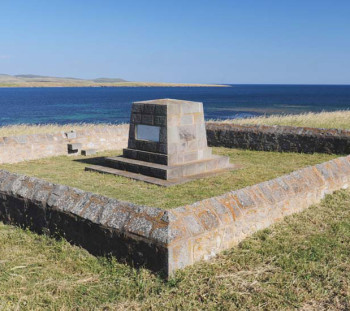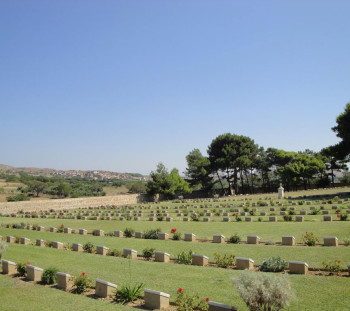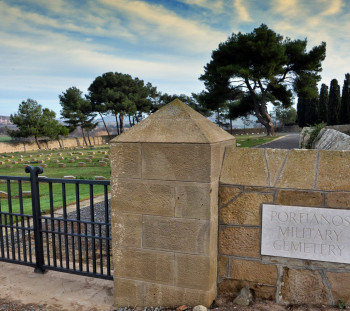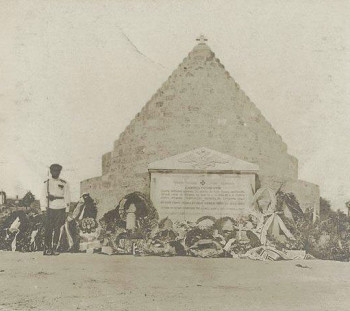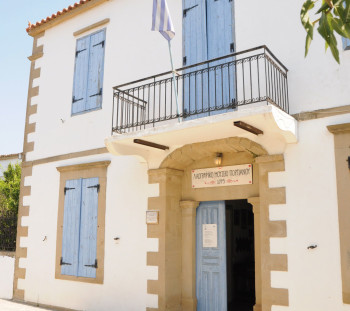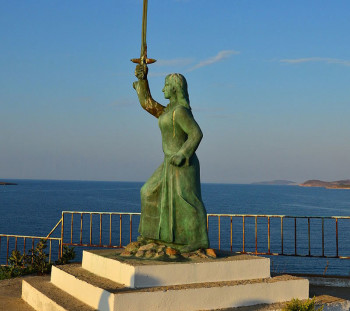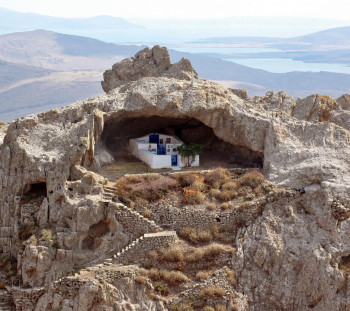Exhibition
Routes of historical memory
Stops 1,2,3. Allied cemeteries
There are two allied cemeteries located n the island of Lemnos. The largest cemetery of the allied forces is located at the village of Moudros, and the second largest at the village Portiano. Buried there are the dead from the First World War in clusters, depending on their nationality. Hundreds of dead soldiers of the Gallipoli campaign. Specifically, there are 148 Australians and 76 New Zealanders buried at the allied cemetery of Moudros, which today is a global monument attracting hundreds of visitors each year. In the second Allied Cemetery Portianou (in the northwest of the church of the Eisodion of the Virgin in Portiano) there are 352 graves of British, French, Canadians, Australians, New Zealanders, Indians and Egyptians. In the coastal area, east of Portiano, between Mandraki and Xirolimni is another cemetery called “Arapiko.” It was created during the First World War. The nameless dead (170 Egyptians and 55 Turkish soldiers – prisoners of World War II) are buried between the enclosure and the South raised wall.
Stop 4. The pyramid of Lemnos
This is the cenotaph of the Cossacks found in Lemnos, when after the October Revolution they were forced to leave Russia. They arrived around 1920 by British and French ships of the Entente and about 5,000 Cossacks landed on Limnos and camped in Moudros and Portiano. The hunger and infectious diseases decimated the Cossacks and the rest of their fellows built in their honor a Cenotaph (or else kolouro, as they call it). In building the “Pyramid” all the Cossacks in exile in Lemnos, even the elderly and young children, were involved. At the top of the pyramid a white marble cross was placed. Unfortunately over the years the pyramid had fallen apart. Today it is almost fully restored.
Stop 5. Folklore Museum of Portianos
It operates in a two-storey traditional house in the village of Portianos. It includes exhibits from the daily life of the inhabitants and more than 300 folk art items like utensils, handicrafts, everyday tools and traditional costumes. It was established in 1995 by the Association of Portianaton of Lemnos in Athens – Piraeus and surrounding areas (and the renewal of the exhibition that took place in 2015).
Stop 6. The statue of Maroula
Maroula was the daughter of Isidore Komninos and Euphrosyne, who protected the area of Kotsinas in the 15th century. On the celebration of Saint Constantine and Saint Helen (May 21st, 1478), Suleiman Pasha launched an attack on the island. The defense of the Greeks and the Venetians began to recede and after Maroula’s father was wounded, all officers scattered. Then Maroula, who was only 18 years, appeared old, lifted up her father’s bloody sword and plunged first into battle and encouraging others. Suleiman left humiliated! At the port of Kotsinas there is currently an imposing bronze statue of the legendary heroine in the courtyard of the Holy Temple Zoodochos Pigi, on the hill where once the impregnable fort of Cochin dominated the area.
Stop 7. Lady Kakaviotissa
Unroofed chapel built in a cave near the village Evgatis, about 4 km. from Myrina, on the mountain Kakavos. A residue of the many estates of the island, known since 1305 when it was acquired by the monastery of Great Lavra. Then monks from Ag. Efstratios were installed in the chapel, which belonged to the monastery, to protect themselves from raids of the Turks. Its location is impressive being at an inaccessible cave at the top of the mountain, surrounded by cliffs, the location probably hosted ancient church and hermits in the Byzantine period. The chapel is celebrated every Tuesday after Easter, when the icon Kakaviotissa is transferred there, which is kept by a family in Kontias.
